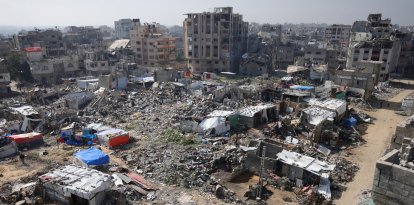Japan updates death toll in New Year's earthquake to 168
Japanese authorities tripled the number of missing people, amounting to 323 people.

(Photo by Philip FONG / AFP)
One week after the 7.5 magnitude earthquake that shook central Japan on January 1, the estimated number of missing people after the strong quake tripled this Monday. It has already reached 323, still a provisional number that for the moment confirms the death of 168 people.
The majority of those missing are in the city of Wajima, one of the most affected towns on the Noto Peninsula, on the shores of the Sea of Japan, which was also the scene of serious fires as a result of the earthquake. The report of catastrophe in the region also includes 565 injured.
The earthquake, followed by hundreds of aftershocks, caused thousands of landslides and the collapse of buildings and roads throughout the region. It also unleashed a tsunami with waves more than a meter high on the coast of the Noto peninsula, a narrow strip of land about a hundred kilometers long. The tremor was felt as far away as Tokyo, 300 km away.
In addition, a week later, new landslides are feared due to snowfall in the area and icy conditions are expected to further complicate traffic on roads damaged by the earthquake, according to authorities warning in recent hours.
Rescue services are also continuing their efforts to reach more than 2,000 people, some of whom are in critical condition, isolated by roads damaged by the earthquake, and to deliver food and equipment to them. Some 29,000 people remained sheltered Sunday in 404 government shelters.
Japan still remembers the devastating 2011 earthquake that triggered a tsunami, leaving some 18,500 dead or missing and causing a nuclear catastrophe at the Fukushima plant. Japan is one of the countries most prone to earthquakes. The Asian country is located in an area known as the Ring of Fire, located on the coasts of the Pacific Ocean and characterized by having some of the most important subduction zones in the world. It is a place where two tectonic plates collide by moving in opposite directions, a movement that produces collisions between both plates and releases energy that translates, among other things, into earthquakes like the one that the Japanese country suffered at the start of 2024.
RECOMMENDATION





















